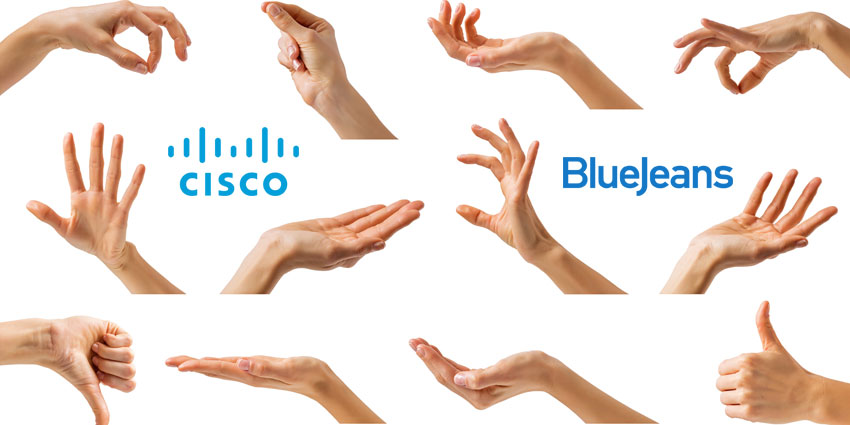As many of us learned during 2020, there’s more to meetings than audio.
Interacting with other people requires a lot of non-verbal communication too, issued in the form of facial expression, body language, and even gestures. In a world where more people are connecting via video, we need a way to express ourselves just as effectively in the virtual world, as we do in real life.
Leading meeting solution providers, BlueJeans and Cisco, recently announced the arrival of new features within their meeting service to support this need. New gesture functionality ensures that teams of all sizes can work more effectively together using non-verbal cues. Whether it’s a thumbs-up, or a round of applause, you can now bring more of your body language into your meetings.
Cisco Webex Gesture Support
The gestures that we use in our everyday conversations can bridge all kinds of borders, eradicating language issues, and bringing people closer together. One frown or smile from a colleague can say a thousand words. In meetings where many employees are often sitting on mute, waiting for the right time to talk, gestures can be particularly valuable.
Cisco’s strategy to make meetings better for everyone includes new abilities to express yourself in your virtual meetings. Webex Gestures are a convenient and easy way for everyone to participate in the conversation, even if they aren’t speaking.
Through Webex AI technology, people can give their input into a meeting without saying anything or waiting for someone to finish making their point. For presenters, the addition of gestures is also a handy way to get an overview of the sentiment in the room fast.
To use gestures, customers simply need to go to the bottom of the screen and toggle the “recognize hand gestures” feature on. Once enabled, the AI will automatically detect thumbs up, thumbs down, clapping, and other gestures, displaying them as reactions in the video window. Participants can also react with smiling, shocked, laughing, and party emojis. The new features will be localized to respect cultural differences too.
BlueJeans Meeting Gestures
In a similar vein, BlueJeans is rolling out its own support for meeting gestures, to make collaboration more effective. According to BlueJeans, being able to see that everyone in the meeting is engaged in an instant can help to make conversations more effective, particularly in the modern work environment.
Gestures will be a way to help business admins and presenters “read the room” in the age of video, something which can be quite difficult to do when you’re interacting with lots of people at once. The new participant reactions feature will allow people in your meeting to express their thoughts and feelings without interrupting the conversation.
Similar to the Cisco features, users can now add reactions to a discussion such as clapping, smiling, thumbs up, and celebrations. These non-verbal acknowledgements give everyone in the room the opportunity to engage in real-time, without making any significant verbal announcements. The reaction options are available immediately for BlueJeans users and will give users the freedom to respond to announcements and discussions however they choose.
Gestures in Meetings
Whether it’s giving employees the options to manually share their thoughts and feelings through easy-to-see reactions, or providing support for AI gesture recognition, video conferencing tools are evolving. The more time we spend in the work anywhere environment, the more we discover that conversations have more to them than audio.
Already, we rely on video to create the same kind of intimate experience that we can get from face-to-face interactions, by offering access to facial expression and body language. However, until now, larger meetings have been more difficult to assess, as it’s not always possible to keep track of everyone’s gestures and expressions at the same time.
Converting facial expressions and reactions into icons that are easier to follow for presenters and team leaders can make it easier to get a full read of the meeting room in an instant. With artificial intelligence from companies like Cisco, business employees won’t even have to click a button to showcase their gestures. They can have the system automatically recognise their sentiment instead.
Going forward, it’s likely that we’ll see more market competitors like Microsoft Teams rolling out similar gesture-focused experiences for non-verbal communication.







